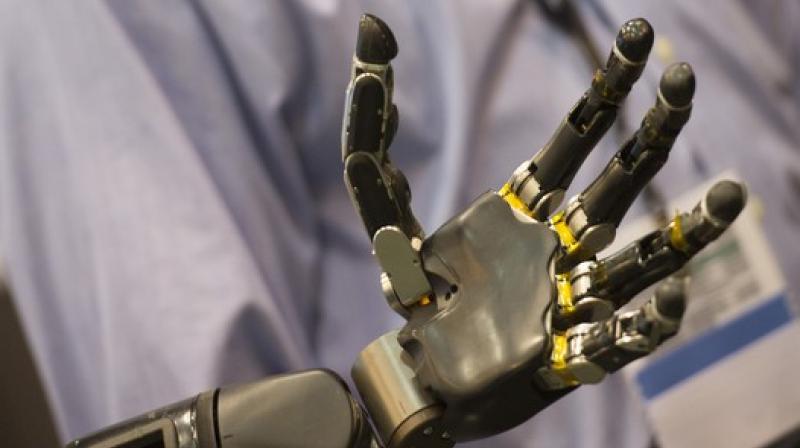Researcher develops mind-controlled robotic arm

A collaborative team of researchers has developed the first-ever successful mind-controlled robotic arm, which can help people with disability.
Being able to noninvasively control robotic devices using only thoughts will have broad applications, in particular benefiting the lives of paralysed patients and those with movement disorders, says a recent study published in the Journal of 'Science Robotics.'
Using a noninvasive brain-computer interface (BCI) has been shown to achieve good performance for controlling robotic devices using only the signals sensed from brain implants. When robotic devices can be controlled with high precision, they can be used to complete a variety of daily tasks.
Until now, however, BCIs is successfully controlling robotic arms through invasive brain implants. These implants require a substantial amount of medical and surgical expertise to correctly install and operate, not to mention the cost and potential risks to subjects, and as such, their use has been limited to just a few clinical cases.
A grand challenge in BCI research is to develop less invasive or even totally noninvasive technology that would allow paralysed patients to control their environment or robotic limbs using their own "thoughts." Such noninvasive BCI technology, if successful, will bring such much-needed technology to numerous patients and even potentially to the general population.
However, BCIs that use noninvasive external sensing, rather than brain implants, receive 'dirtier' signals, leading to the current lower resolution and less precise control.
Thus, when using only the brain to control a robotic arm, a noninvasive BCI doesn't stand up to using implanted devices. Despite this, BCI researchers have forged ahead, their eye on the prize of a less or non-invasive technology that could help patients everywhere on a daily basis.
Bin He, trustee, one of the researchers of the study, is achieving that goal, one key discovery at a time.
"But noninvasive is the ultimate goal. Advances in neural decoding and the practical utility of noninvasive robotic arm control will have major implications on the eventual development of noninvasive neurorobotics," he said.
The technology also has applications that could help a variety of people, by offering safe, noninvasive "mind control" of devices that can allow people to interact with and control their environments.
The technology has, to date, been tested in 68 able-bodied human subjects (up to 10 sessions for each subject), including virtual device control and controlling of a robotic arm for continuous pursuit. The technology is directly applicable to patients, and the team plans to conduct clinical trials in the near future.
"Despite technical challenges using noninvasive signals, we are fully committed to bringing this safe and economic technology to people who can benefit from it. His work represents an important step in noninvasive brain-computer interfaces, a technology which someday may become a pervasive assistive technology aiding everyone, like smartphones," he said.

